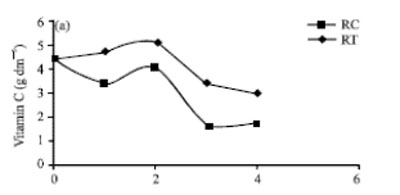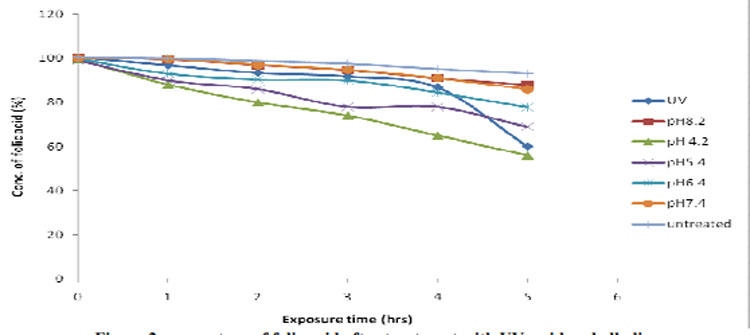The nutritional value of such ingredients can degrade when exposed. Therefore, maintaining the viability (and consistency — along with accurate label claims) of these nutritional components in food and beverage products, from the time of production to the time of consumption, can be challenging.
Although there is a risk of products providing lower levels of vitamin or other nutrients (compared with the promises made on their labels) in some cases, there is also a risk of consumers actually consuming more of certain nutrients than they were aware of, or desired to consume.
Knowing that there will be degradation, some manufacturers “over-fortify” products to exceed label claims by the time the products get to (or sit on) shelves.1
As a result, end-users sometimes consume products with nutritional ingredient levels that actually exceed the claims made on labels. Consuming excessive doses of certain vitamins and other ingredients can be harmful and, at a minimum, they simply deserve accurate and honest labelling of the products they ingest.
Heat destroys vitamins and probiotics
Food and beverage manufacturers rely on a few methods to extend product shelf-life and/or avoid the need for expensive and restrictive cold channel distribution. Pasteurisation has long been used as a common means of killing bacteria in beverage products.
Owing to the acceleration of the natural products movement in the last decade or two, chemical preservatives have been removed from the formulations of many natural products. Doing so makes it incumbent upon the manufacturer to utilise some other means of eliminating bacteria (otherwise known as a “kill step”).
The most common methodology is to revert back to the application of extreme heat … even though newer technologies are available.
Nevertheless, heat remains extremely common. And heat harms the potency and effectiveness of a variety of vitamins and other nutrients. Degradation generally starts to occur in foods or beverages exposed to temperatures of greater than 120 °F.
The temperatures used in beverage kill steps range from extended periods at 160–175 °F (certain tunnel pasteurisation processes) to a more common level of around 190–200 °F for hot filling, 180–220 °F for aseptic packaging and up to 240 °F (about 30 degrees hotter than boiling water) for some retort processes. These temperatures can dramatically alter the nutritional content of foods and beverages.
Vitamin C and heat
Vitamin C begins to denature at temperatures as low as 86 °F, according to a study in the International Journal of Scientific and Technology Research.2
The negative effects of heat increase significantly at 140 and even more at 170 °F. In fact, pasteurisation was blamed for the dramatic increase in infantile scurvy in the late 19th century as naturally occurring vitamin C in milk was destroyed by pasteurisation.
The International Journal of Scientific and Technology Research study looked at the effect of heat on different vegetables and measured the percentage of vitamin C lost at 5, 15 and 30 minutes while exposed to constant heat of 140 °F (far less extreme than most pasteurisation methods). The impact is material (Table I). As the authors state: “Vitamin C is water-soluble and, as such, is easily leached into the water and then degraded by heat.”
Vitamin drinks and heat
A standard hot-fill process used for many well-known vitamin-enhanced drinks typically heats the fluid to between 194 and 203 °F and then cools it to about 180 degrees before being transferred to a bottle in which cooling continues. The temperatures required to hot-fill are widely believed to be very damaging to vitamins (and even more damaging to probiotics).
Other nutrients and heat
Vitamin C, thiamine (B1) and pantothenic acid are all “sensitive” or “highly sensitive” to damage by heat. Probiotic cultures are even more delicate and cannot live above 120 °F, as with virtually all bacteria and yeast.
For probiotics, the drinks must be taken to market through the cold channel at considerably higher costs or not at all. One popular probiotic-fortified beverage, Kevita (owned by Pepsi) was recently the subject of a class action lawsuit for false labelling claims as any naturally occurring probiotic cultures were all destroyed when the product was pasteurised to extend its shelf-life.
The manufacturer then “adds back” probiotic cultures; but, the plaintiff in the lawsuit claims that doing so, and still calling the product a “kombucha” (or making other related claims), is misleading.3
Probiotics
Within the last decade, probiotics have risen beyond specialty and niche markets to become a mainstream ingredient.4
GanedenBC30 (the probiotic strain used in all Karma products) was the first strain of Bacillus coagulans for which safety data was published in a peer-reviewed journal.
To deliver health benefits, probiotic bacteria must overcome several challenges present in food processing. Furthermore, ensuring that probiotics remain viable throughout shelf-life is a formidable challenge.
Water-induced oxidation and reduced potency
Oxidation in water causes water-soluble vitamins and probiotics to degrade with time. Just as nails rust in damp air and apples turn brown when cut open, water soluble vitamins and probiotics degrade when exposed to water and oxygen.
This happens naturally in the atmosphere but putting the vitamins or probiotics in a water medium facilitates and accelerates the process — sometimes quite significantly.
Vitamin C, also known as ascorbic acid, is an example of a water-soluble vitamin and is common in natural fruits and as a supplement. Vitamin C has been widely studied and, in one paper, was shown to degrade by approximately 50% in 4 weeks in the juice of different fruits.5
Figure 1 shows the concentration of vitamin C in the juice of an orange at 4 °C and at room temperature during the course of 4 weeks. The decrease in concentration during that relatively short timeframe ranges from approximately 50% to 35%.
Notably, as previously referenced, “over-fortifying” by the maximum allowed amount of 15% would not make up for the degradation.

Figure 1: Concentration of vitamin C in fresh orange juice from 0 to 4 weeks
The effects of oxidation are similar on other water-soluble vitamins, such as thiamine (vitamin B1), riboflavin (vitamin B2), niacin (vitamin B3), vitamin B6 (pyridoxine), folate (folic acid), vitamin B12, biotin and pantothenic acid.
Acidity (low pH) causes faster degradation … and many common beverages have pH levels low enough to cause significant degradation. Again, the effect of a typical hydration beverage on a delicate active ingredient such as folic acid is quite significant (Figure 2).

Figure 2: Percentage of folic acid after treatment with UV, acid and alkali
For probiotics, the effects are similar. Probiotics are bacteria and yeast colonies that are believed to have beneficial effects on digestion and other areas.
A study by A. Talwalkar and K. Kailasapathy shows that oxygen proves toxic for probiotic yogurts as follows: “The presence of such an oxygenic environment in yogurt throughout its manufacture and storage is thus believed to negatively affect the extended survival of probiotic bacteria such as L. acidophilus and Bifidobacterium spp.).”6
Water comprises oxygen and facilitates oxidation. Indeed, exposure to oxygen has been suggested as one of the reasons for a loss in probiotic viability. The production and bottling of probiotics products causes damage and oxidative stress to the cultures. Furthermore, heat can destroy such cultures.
Degradation testing and validation
Consumer Labs, an independent consumer testing company, tests the label claims of vitamin and supplement makers. In their most recent diagnosis of vitamin C supplements, the three that failed their label claims all did so with over-concentration. There was too much vitamin C!
There is a common conception that consuming “too much” of a water-soluble vitamin is harmless, but that is not correct. Folic acid is a common, overly consumed vitamin that can cause issues such as diarrhoea, nausea, heartburn and abdominal cramps, according to the Mayo Clinic.
Damage by sunlight
Many vitamins are sensitive to the effect of UV light and, therefore, sunlight. The vitamins most affected include vitamin A, B2 (riboflavin), B6, B12 and folic acid.
Indeed, sport drinks and enhanced waters opt for the clear PET bottle for branding and cost-effectiveness. Exposure to sunlight (in addition to extreme heat) is likely to further impact vitamin degradation in these products, which are unlikely to contain the nutrients they claim to have by the time the consumer is drinking them.
References
- For “naturally occurring” vitamins, such as vitamin C in orange juice, FDA allows meaningful variance; but, for “fortified vitamins” added into products, the level of vitamins contained in the product on the shelf must exceed label claims.
- www.ijstr.org/final-print/nov2013/Effect-Of-Heating-On-Vitamin-C-Content-Of-Some-Selected-Vegetables.pdf.
- www.bevnet.com/news/2017/kevita-targeted-class-action-suit-authenticity.
- www.ganedenprobiotics.com/images/uploads/white_paper_pdfs/beyond_the_dairy_case.pdf.
- https://scialert.net/fulltext/?doi=tasr.2009.79.84.
- www.ncbi.nlm.nih.gov/pubmed/15055922.




